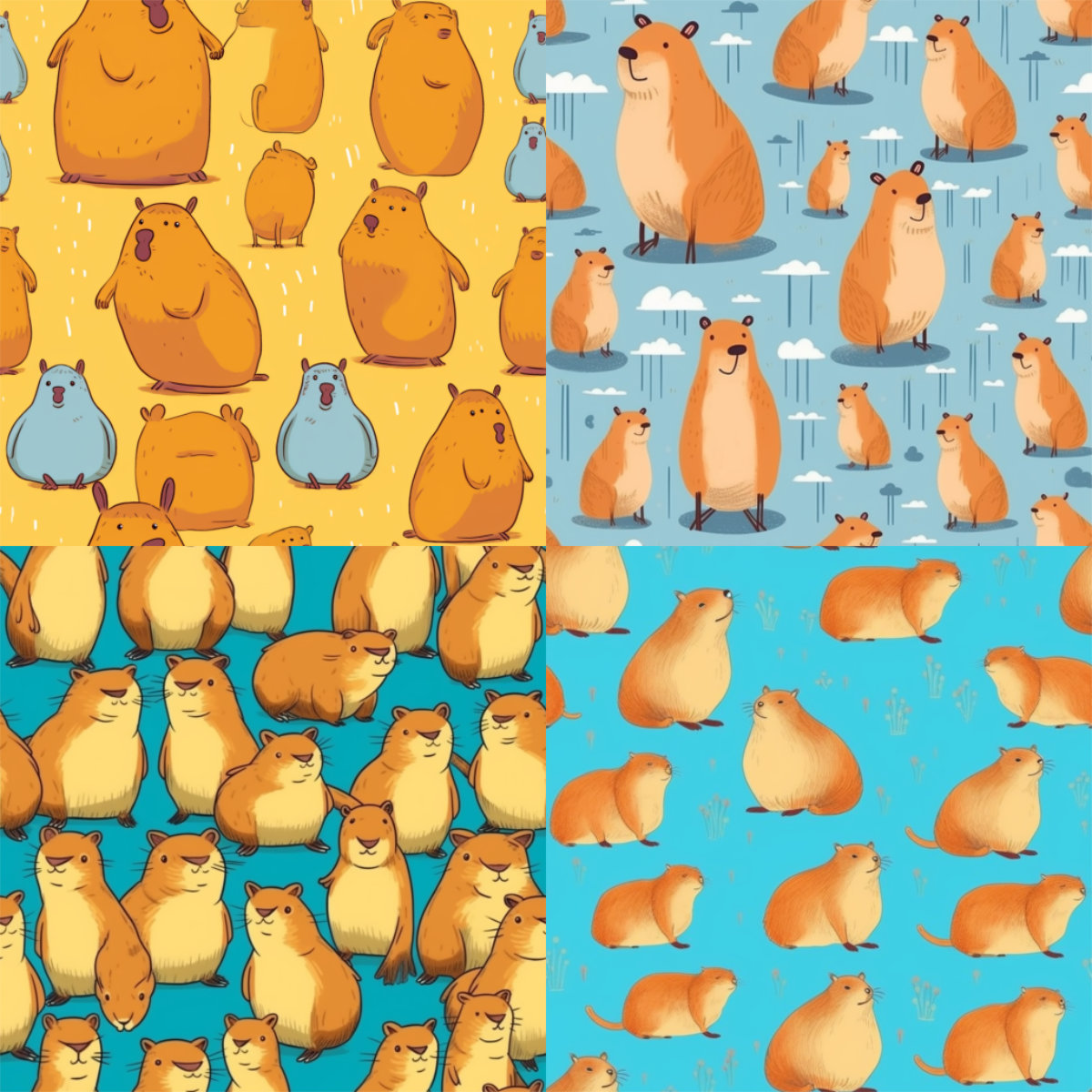There will be quite a few possible changes in settings, parameters, etc. that you can make. To make sure everything is as clear as possible, I’ll use one subject - a capybara - so you can see the effect of the change.
How To Structure Your Prompt
There are 3 main parts of a prompt in Midjourney:

The text prompt is required as that’s the main subject you want to generate. The other two parts (image prompts and parameters) are optional, but they can help you fine-tune the generated images, which we will learn how to do soon.
One thing to keep in mind is that Midjourney doesn’t understand or process most punctuations. The two that it understands are:
- Double hyphens -- which goes before parameters like --ar 2:3
- Double semicolons :: which goes before weights like ::2
We will look at how to use them later. That being said, I still recommend using commas to separate your thoughts and organise your prompts.
Best Practices Of Midjourney Prompt Writing
Generate One Thing At A Time
Sometimes the more you ask Midjourney to generate at once, the higher the chance it will make a mistake.
No Filler Words
Don’t say "please generate a cute capybara for me", just type “a cute capybara”.
Keep Experimenting
You may not get it right the first time, but as you experiment with different prompts, you will get better and better at it.
Be Specific & Direct
Use descriptive language especially adjectives and adverbs when writing prompts. The thing you leave out will be randomised and Midjourney may generate something that’s not what you want. Here are some of the elements you can include in your prompt:
1. Subject
2. Medium
Photo, illustration, photo, painting, doodle, etc.
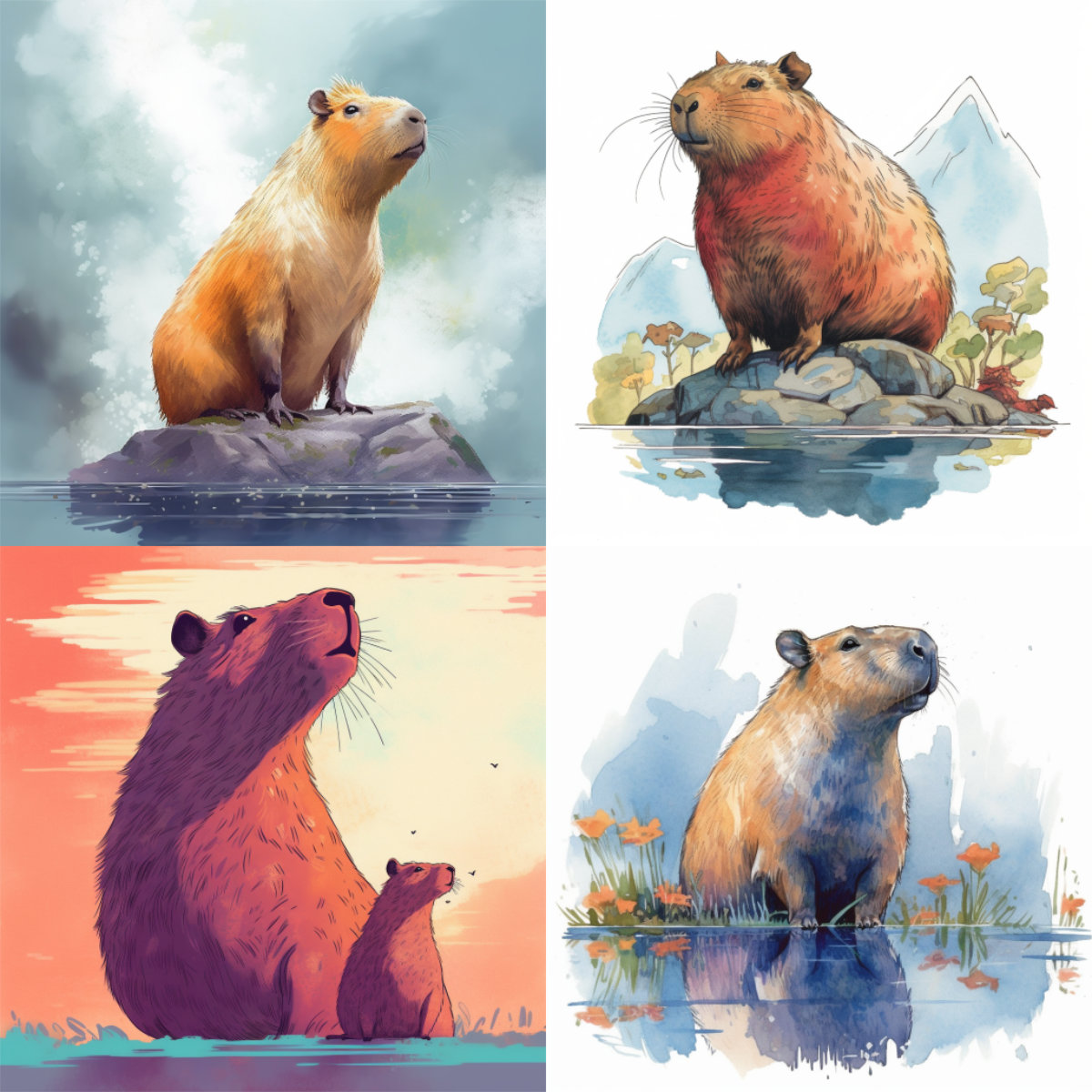

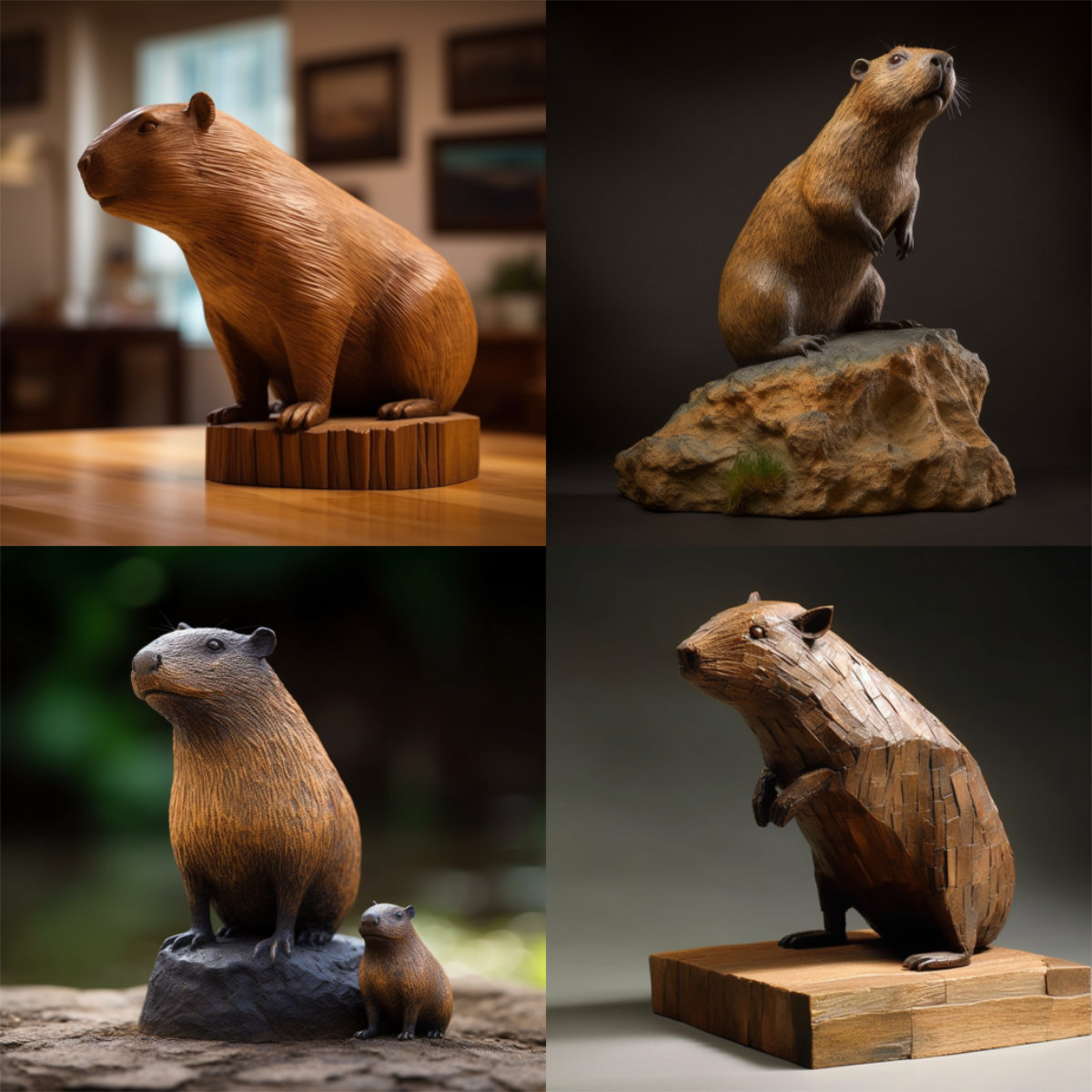
3. Environment
Forest, concrete jungle, in a cafe, arctic, beach, Hogwarts, Narnia, etc.
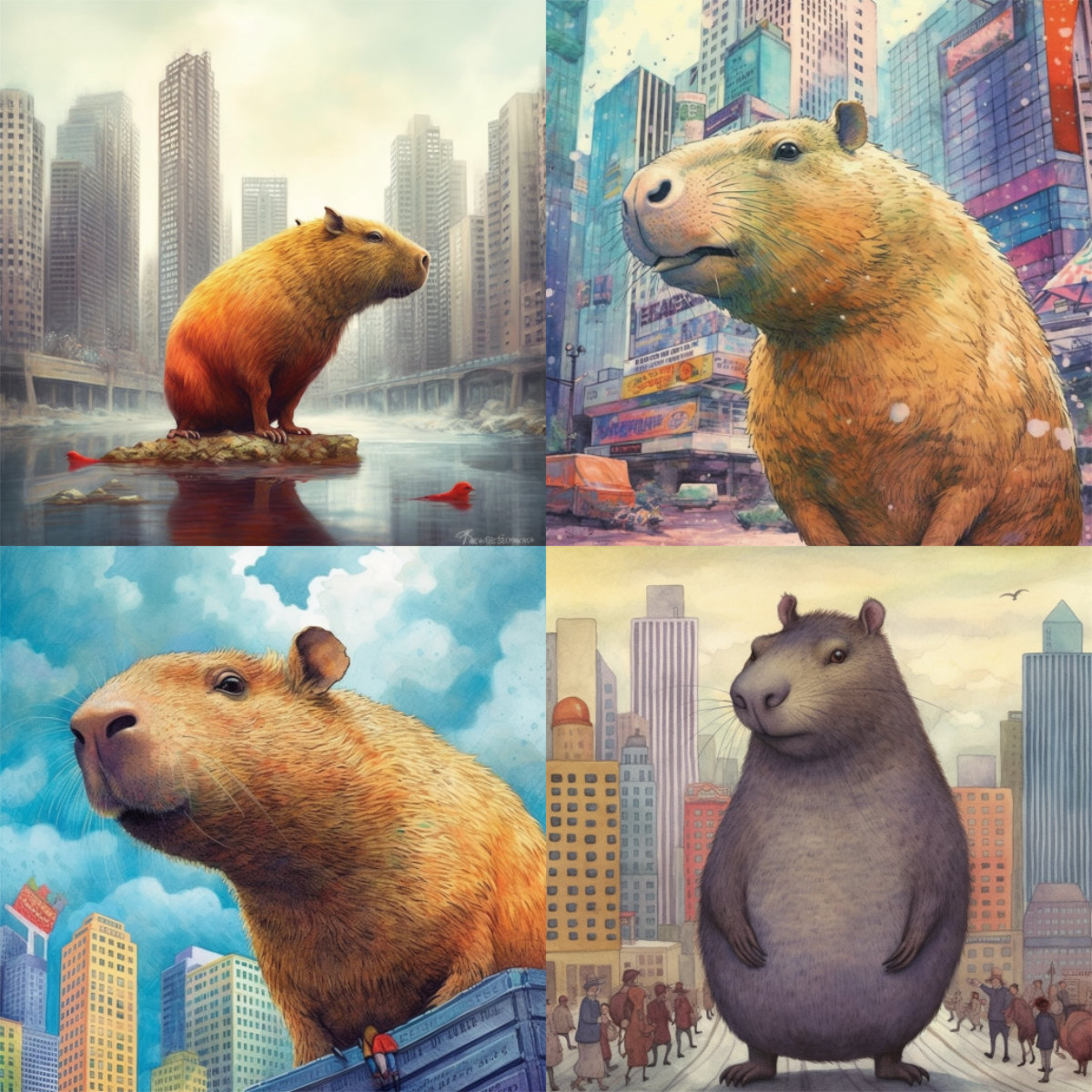
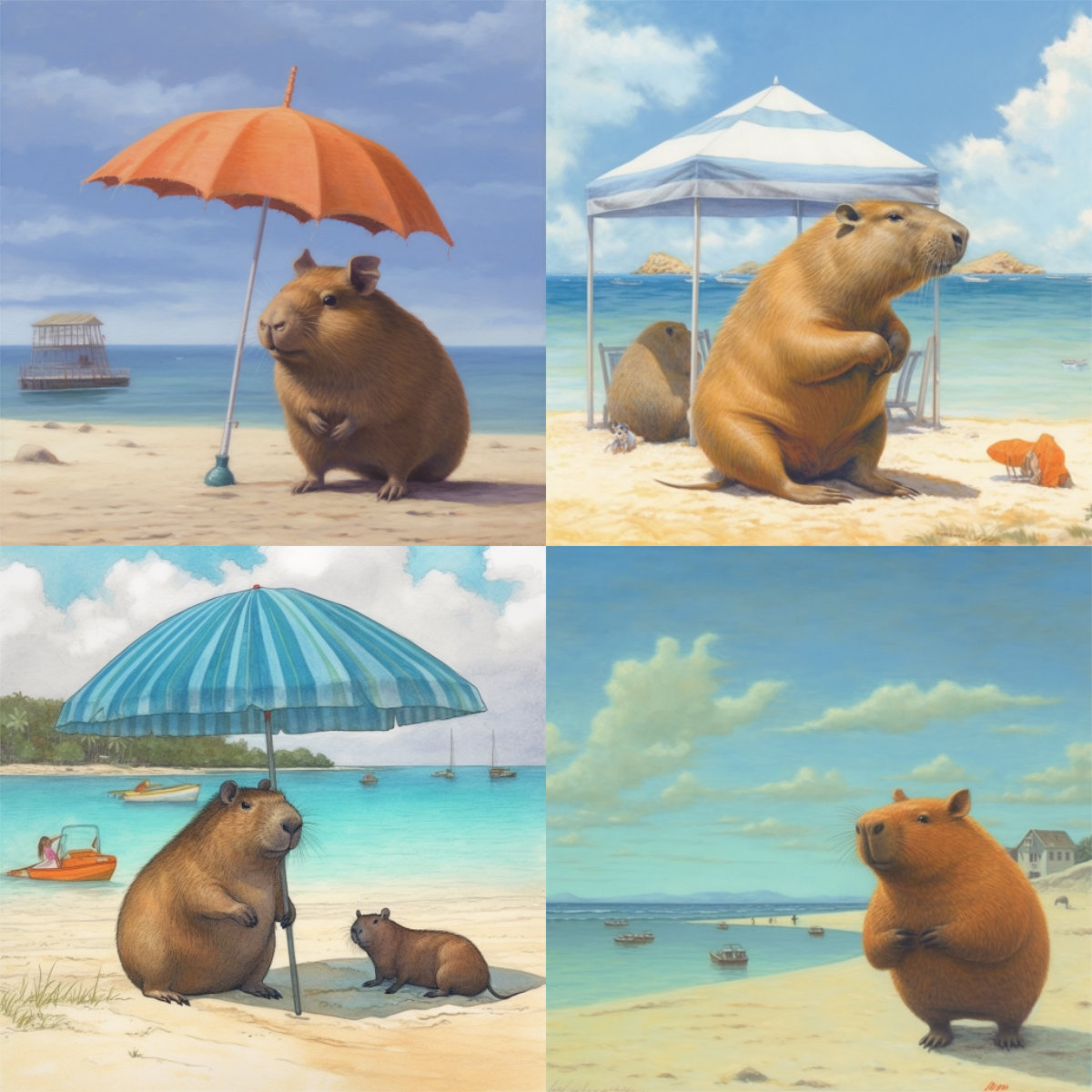
4. Lighting
Golden hour, day time, twilight lighting, soft, studio lighting, neon lights, etc.

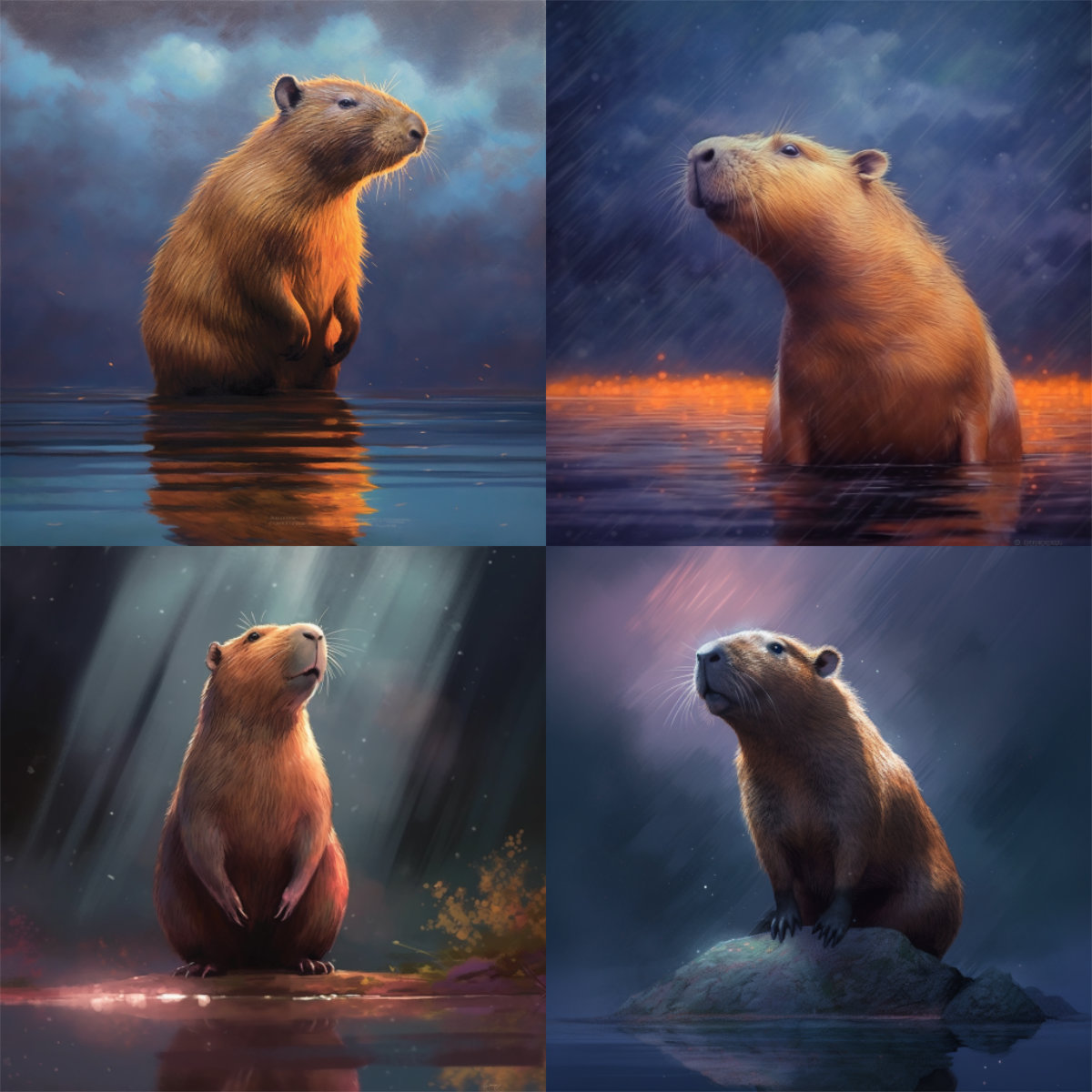
5. Colour
Vibrant, earthy tone, duotone, black and white, pastel, red, blue tinted, etc.
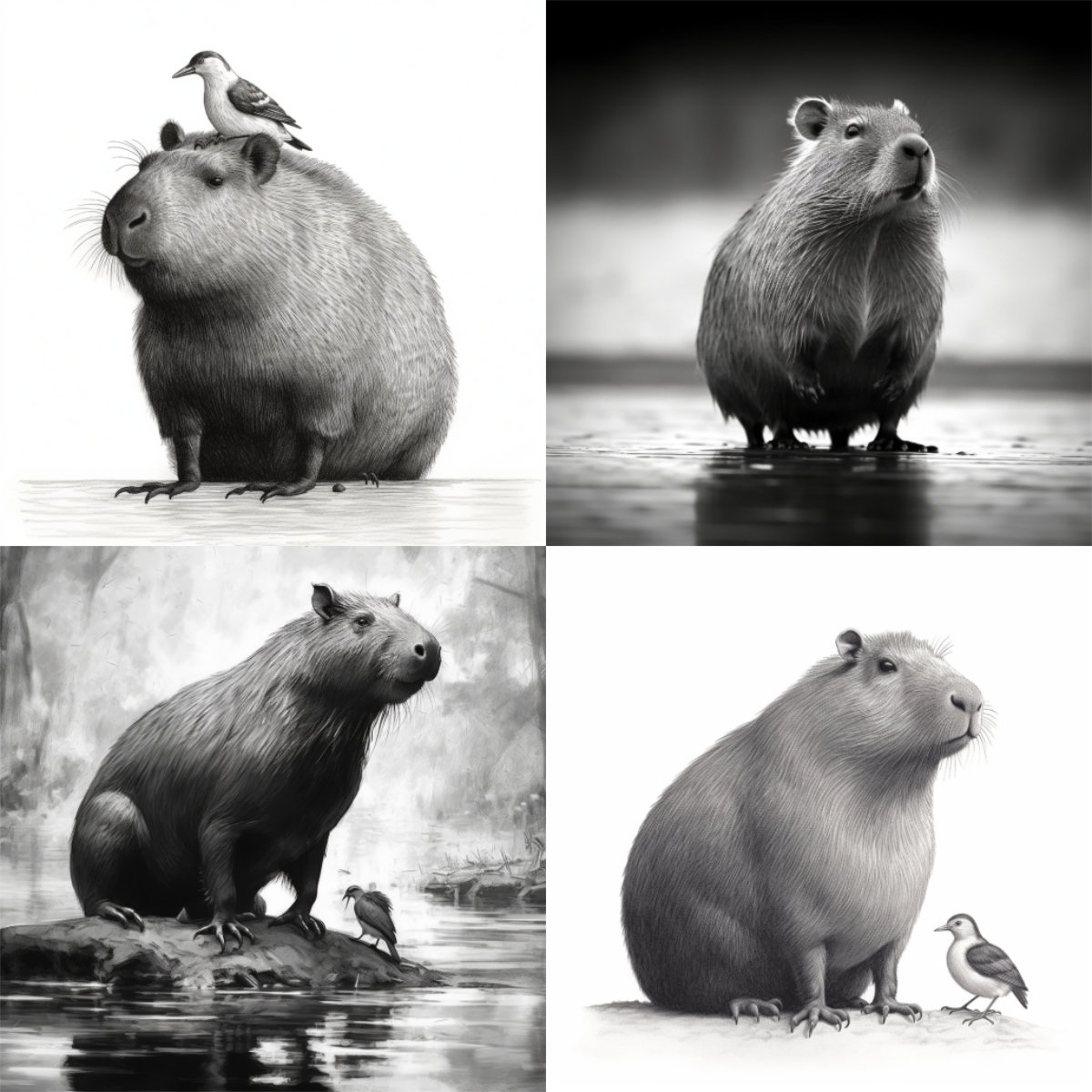
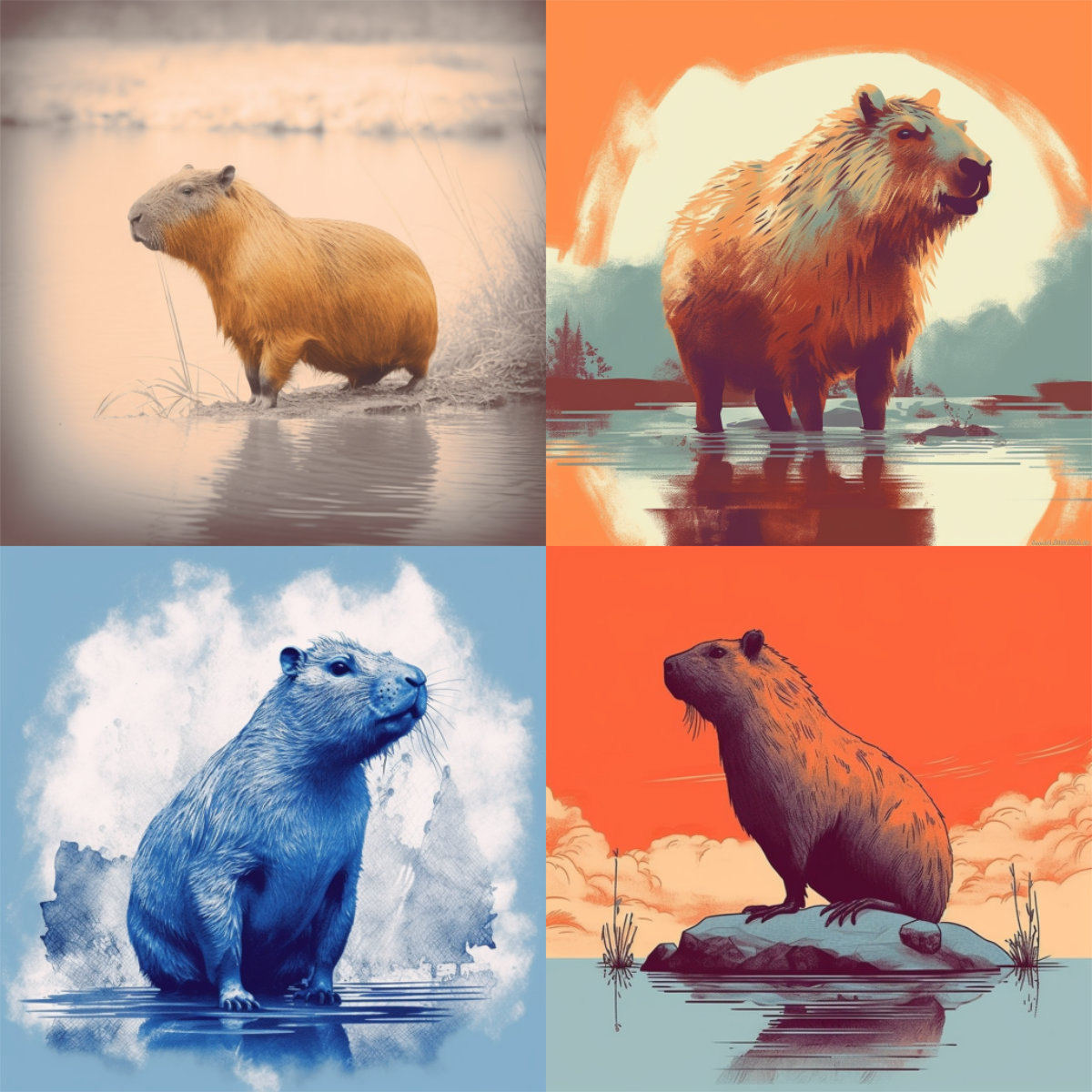
6. Mood
Happy, calm, sad, angry, sleepy, surprised, etc
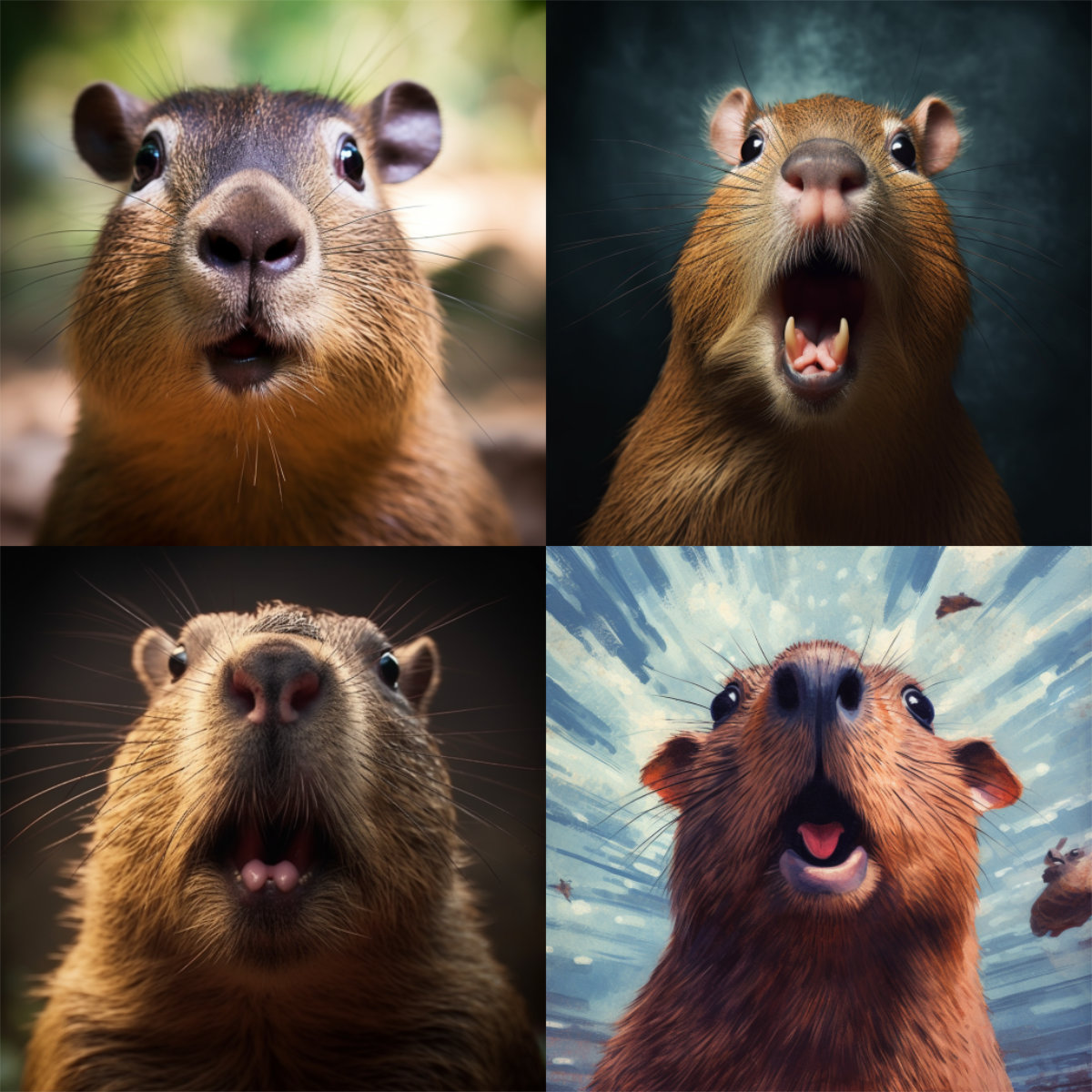
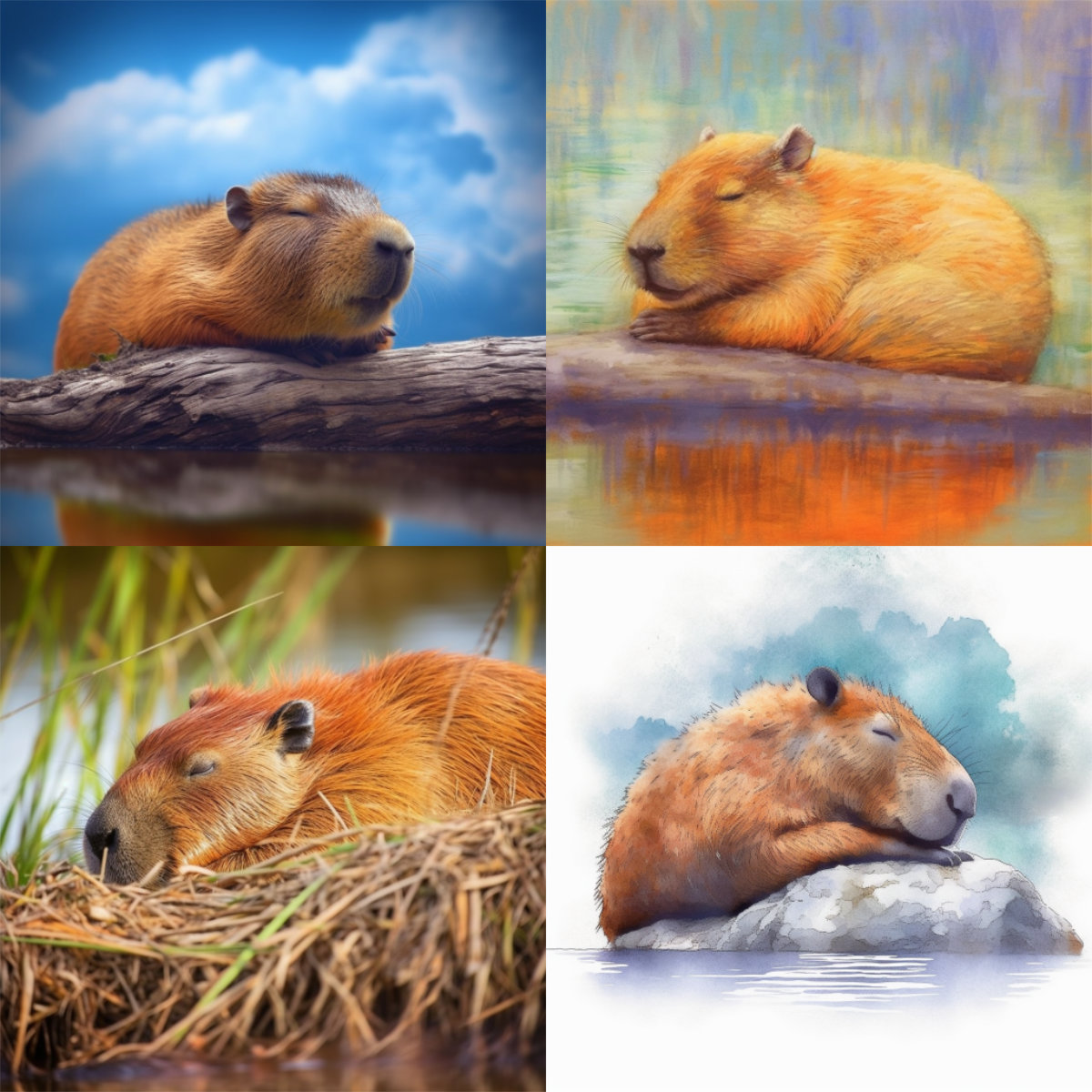
7. Composition
Wide shot, close-up, flat lay, top down, macro, telephoto, aerial, rule of third, symmetrical, front view, etc.
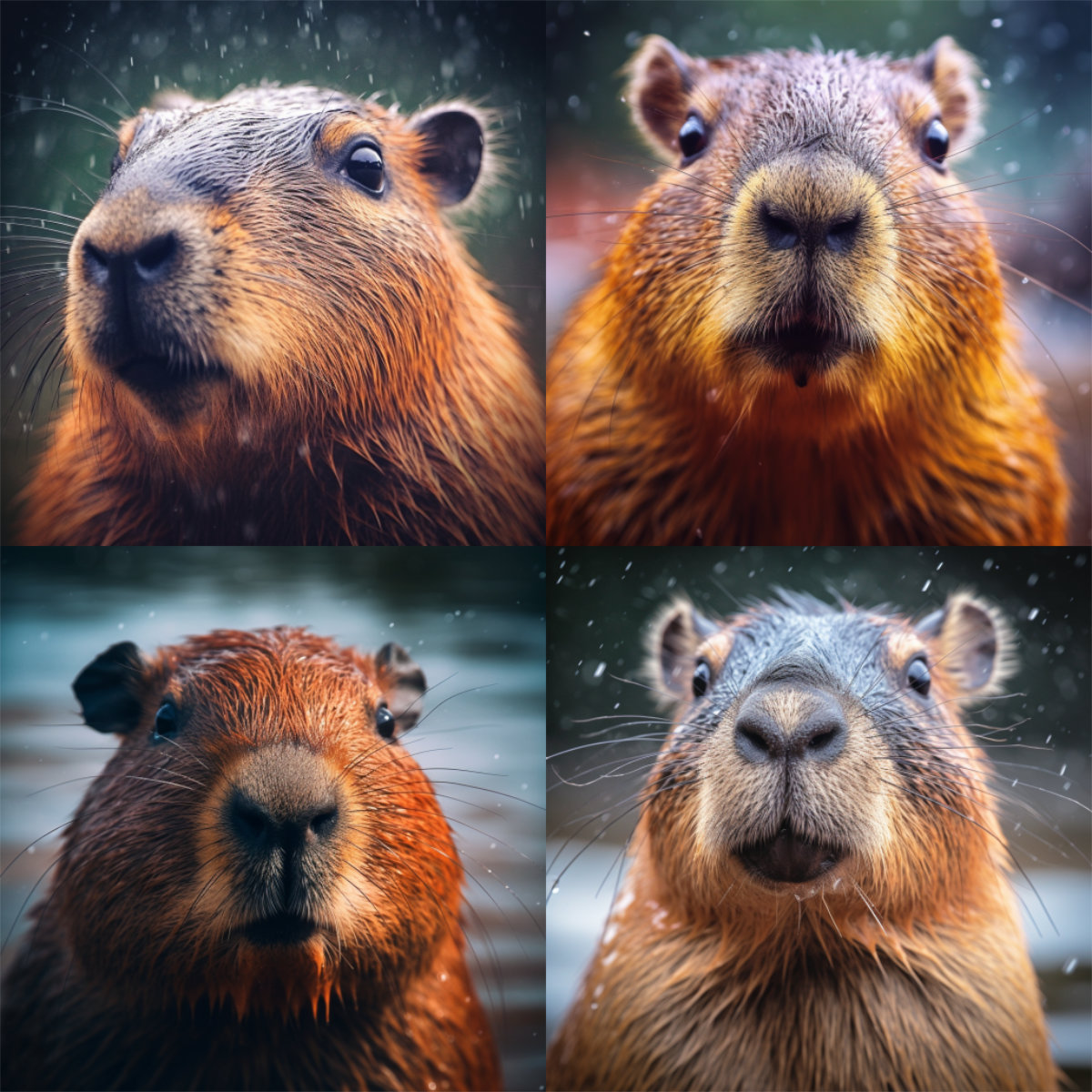
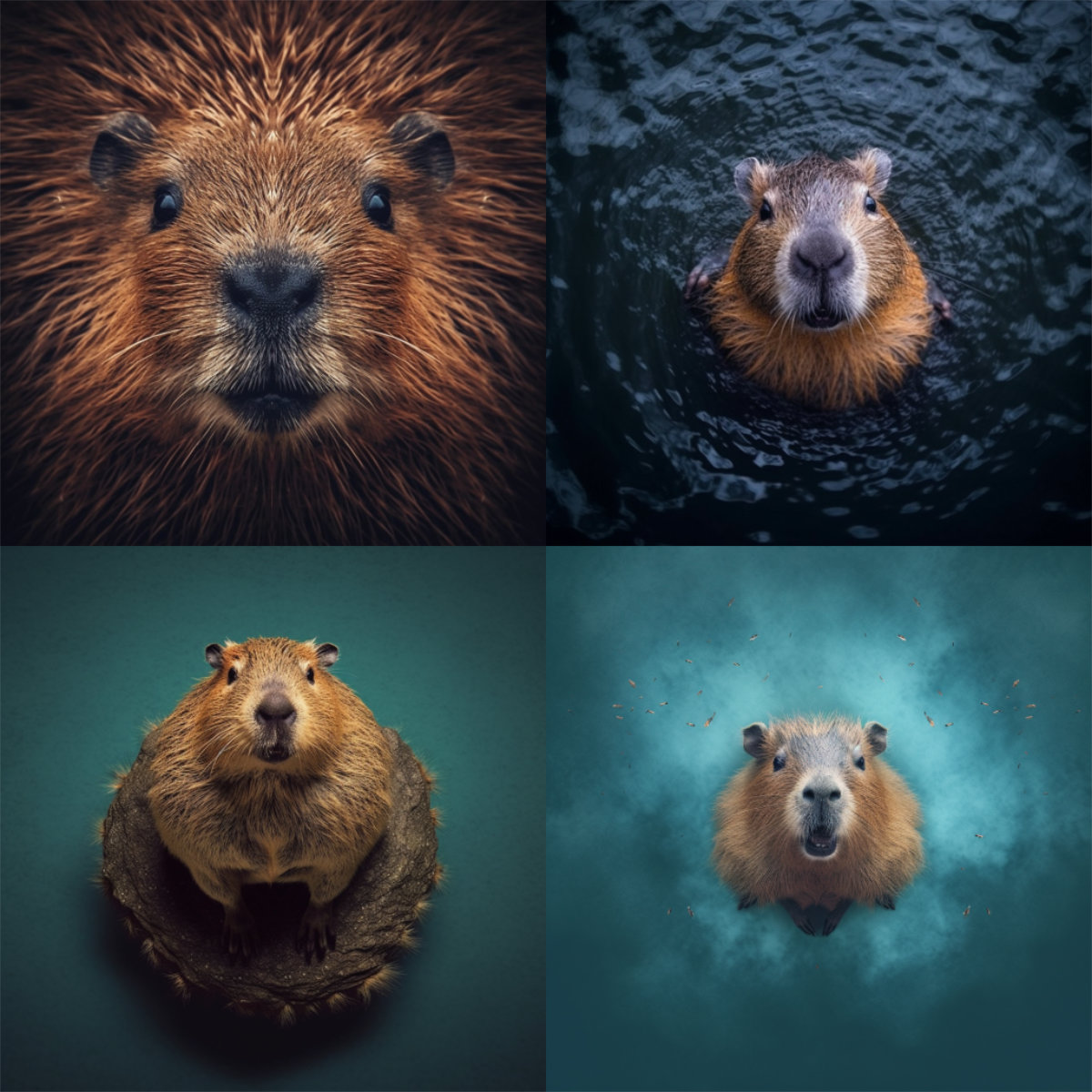
Settings Of Midjourney
When you type /settings in the prompt box, you will get the following settings:

Versions
Midjourney regularly releases newer version that generates higher quality results. In general, higher version will generate higher quality images, especially for complex prompts. Here are a few examples with the prompt "happy capybara sitting in a cafe drinking coffee, golden hour lighting, ultra-wide photography":
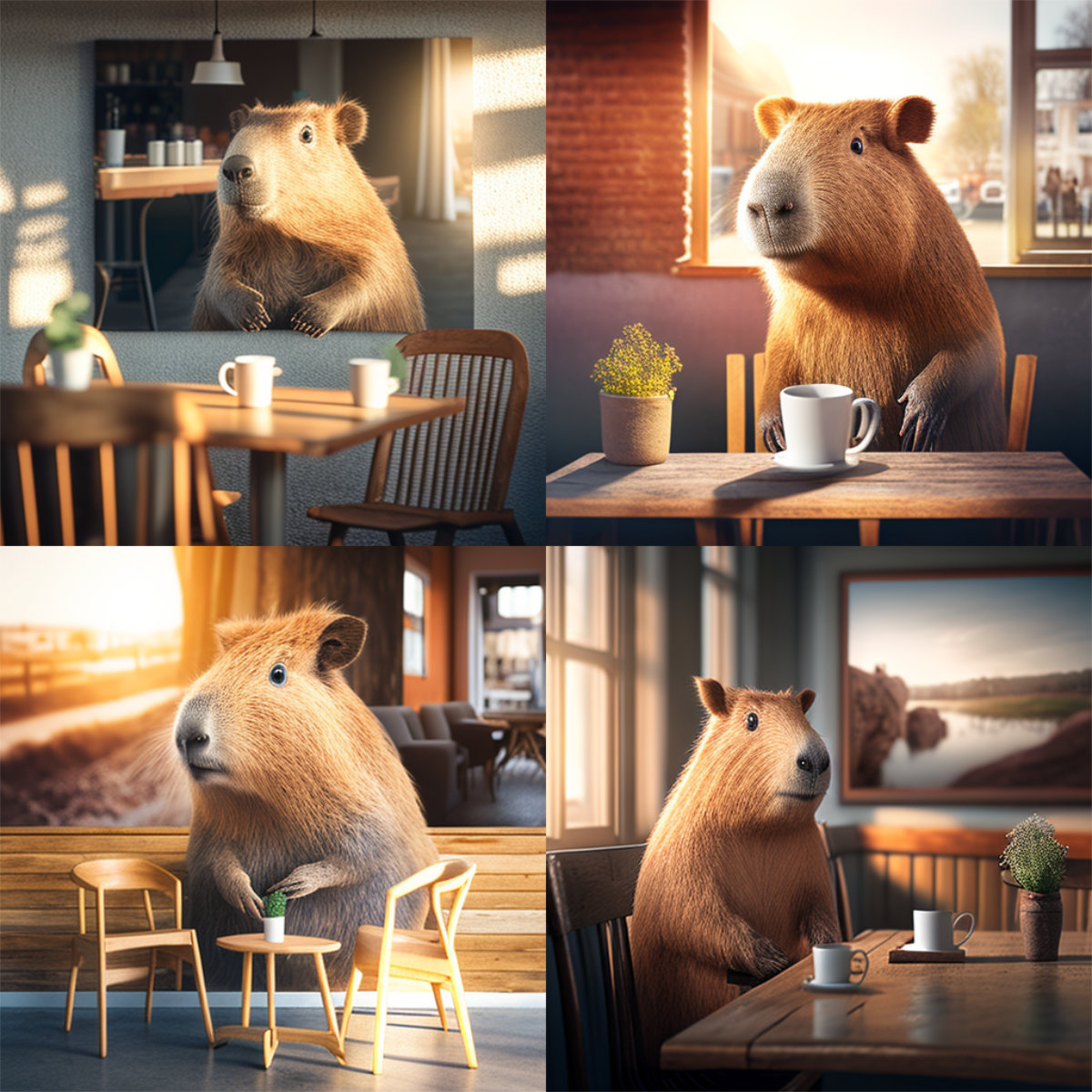
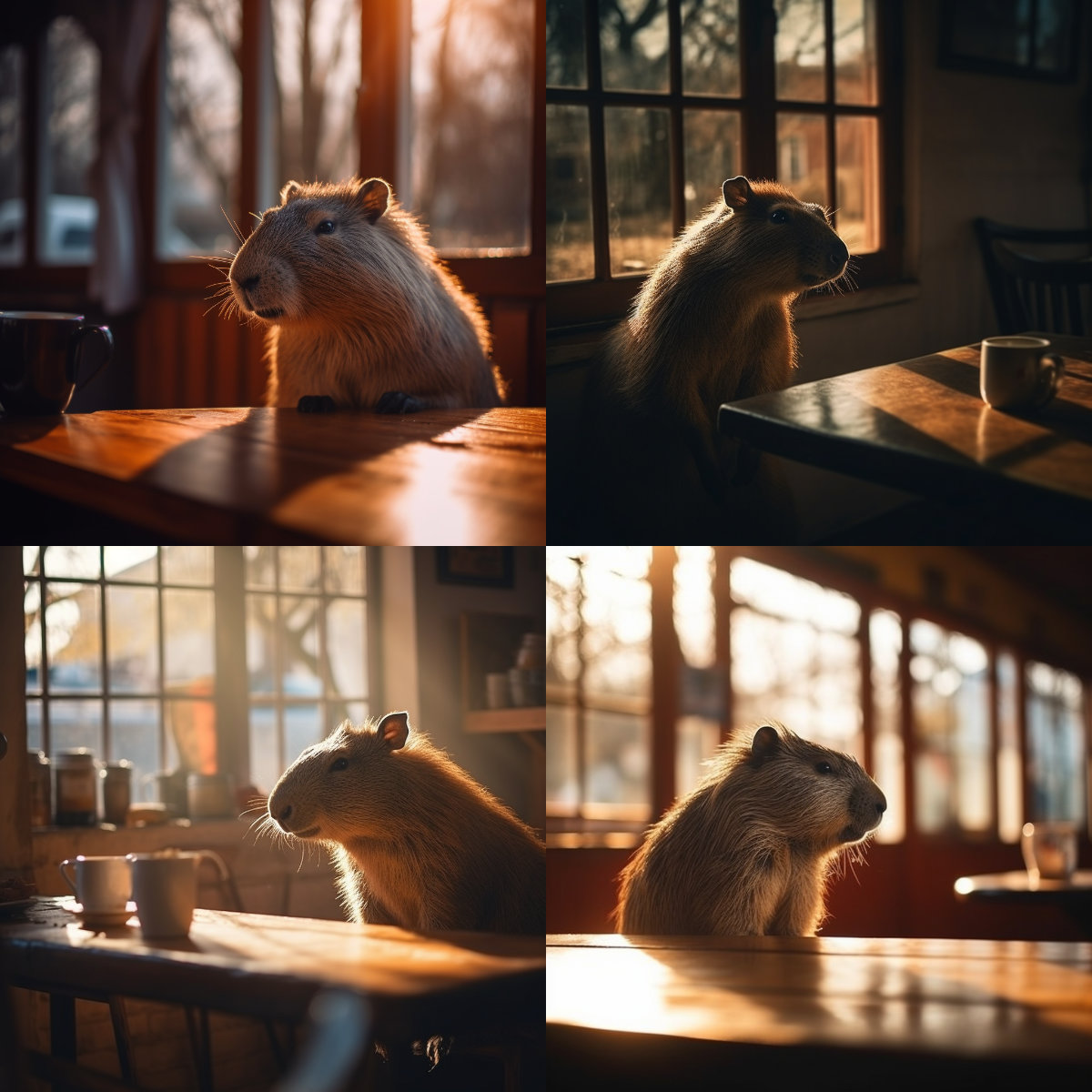
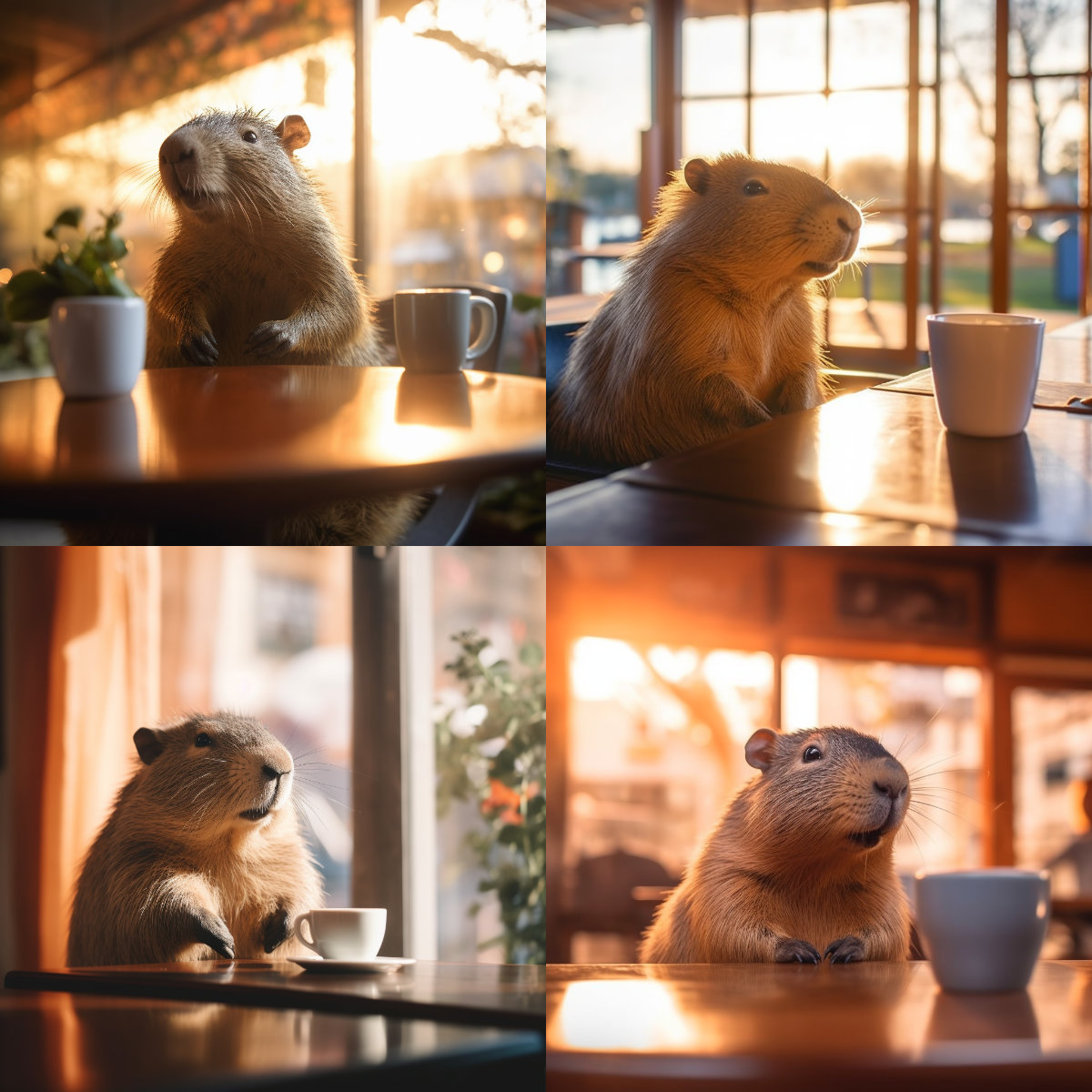
Niji
Using the niji versions can generate images that looks like anime and illustrations:
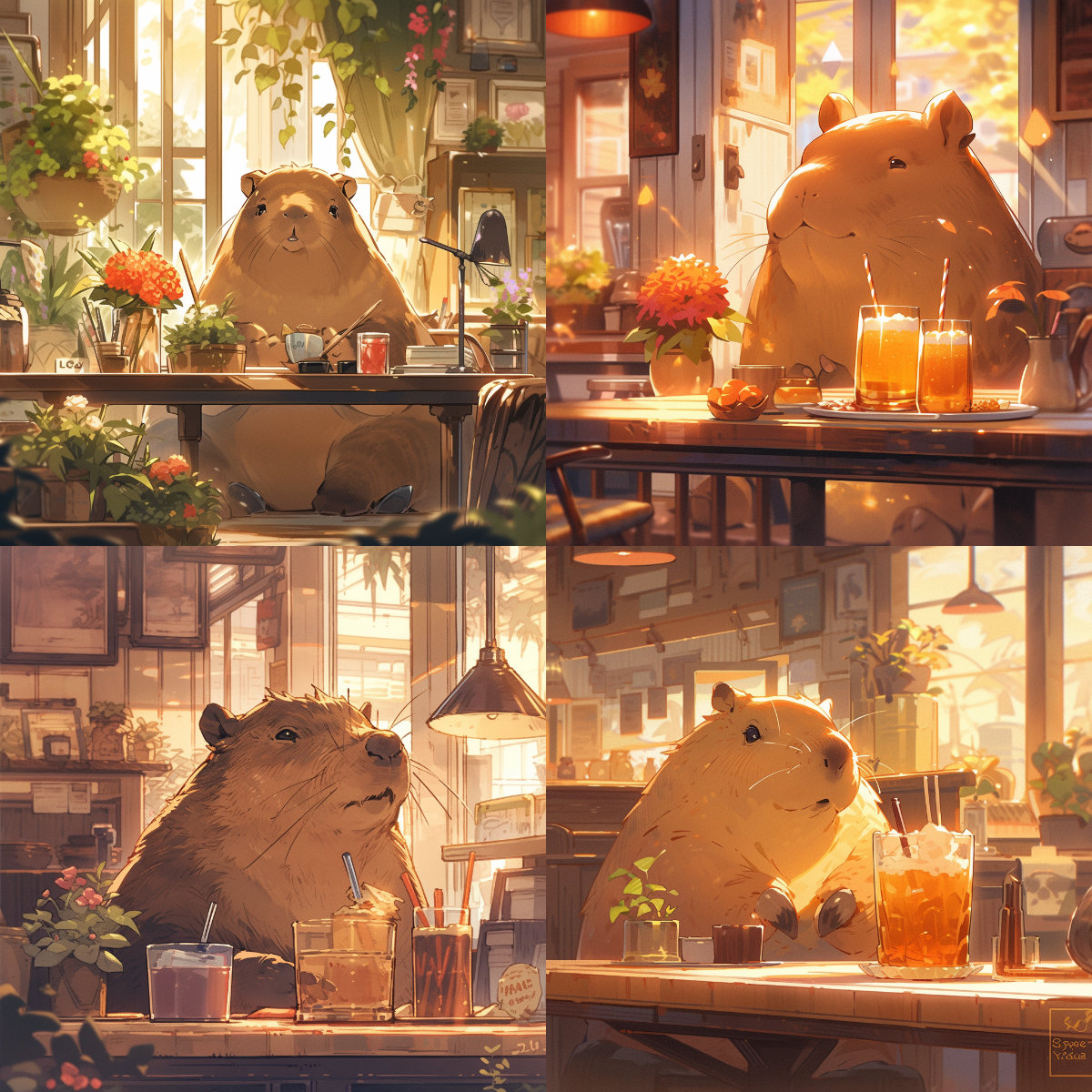
Stylize
There are 4 options: Stylize low, medium, high and very high. The higher it is, the more ‘artistic’ and ‘creative’ the image will be. In general, set it to very high if you want to generate more photorealistic and intricate images. Set it to lower if you want simpler designs like sticker designs.
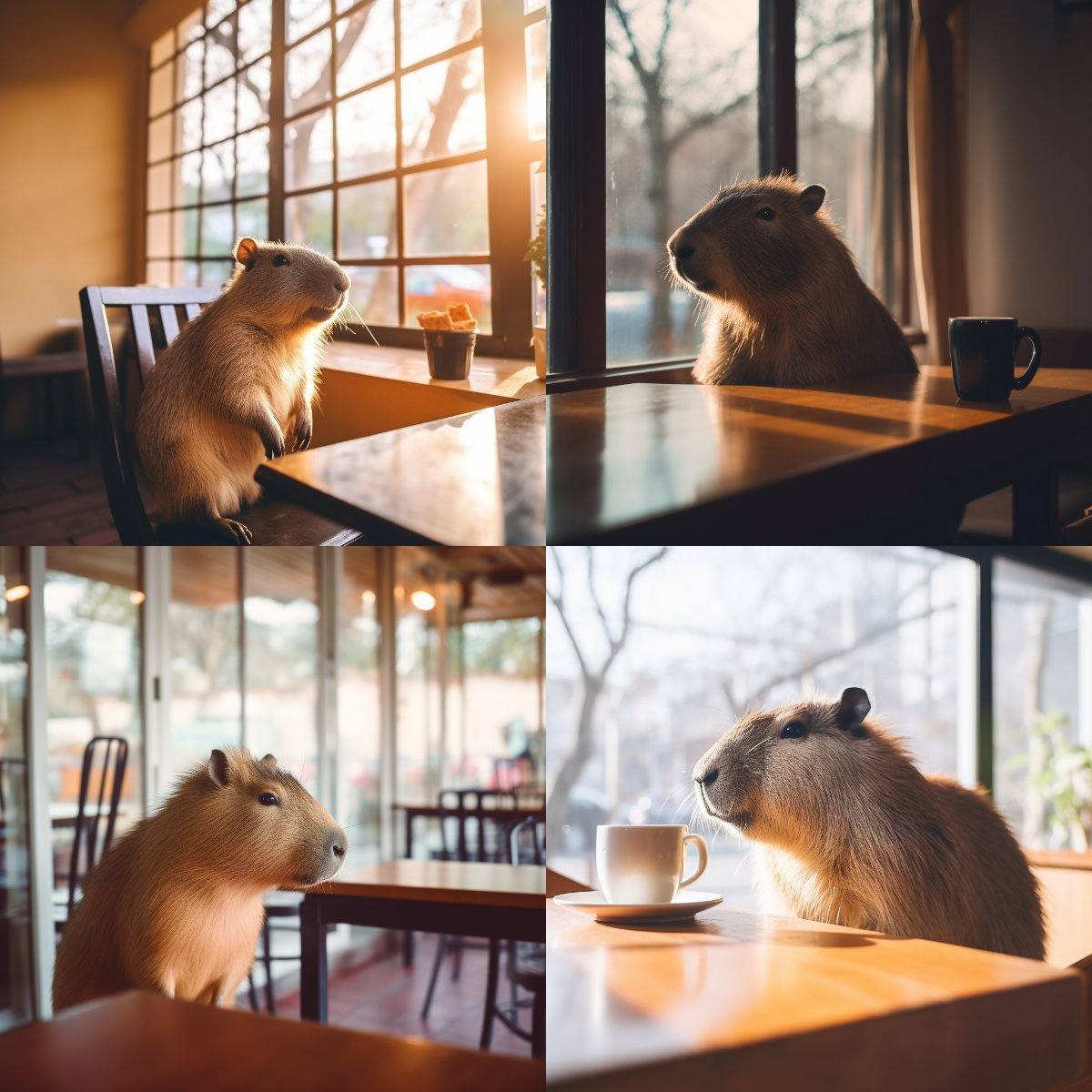

Remix
Remix is a more advanced feature. Similar to a ‘follow-up’ prompt in ChatGPT, you can make adjustments to the prompts (like subject, lighting, colour, etc.), parameters, versions and aspect ratios. It uses your original generated image as a starting point.
After generating images, click the corresponding V button for the image you want to make adjustments to, and a Remix Prompt window will pop up. Then you can make adjustment to the original prompt by rewriting the parts you want to change.

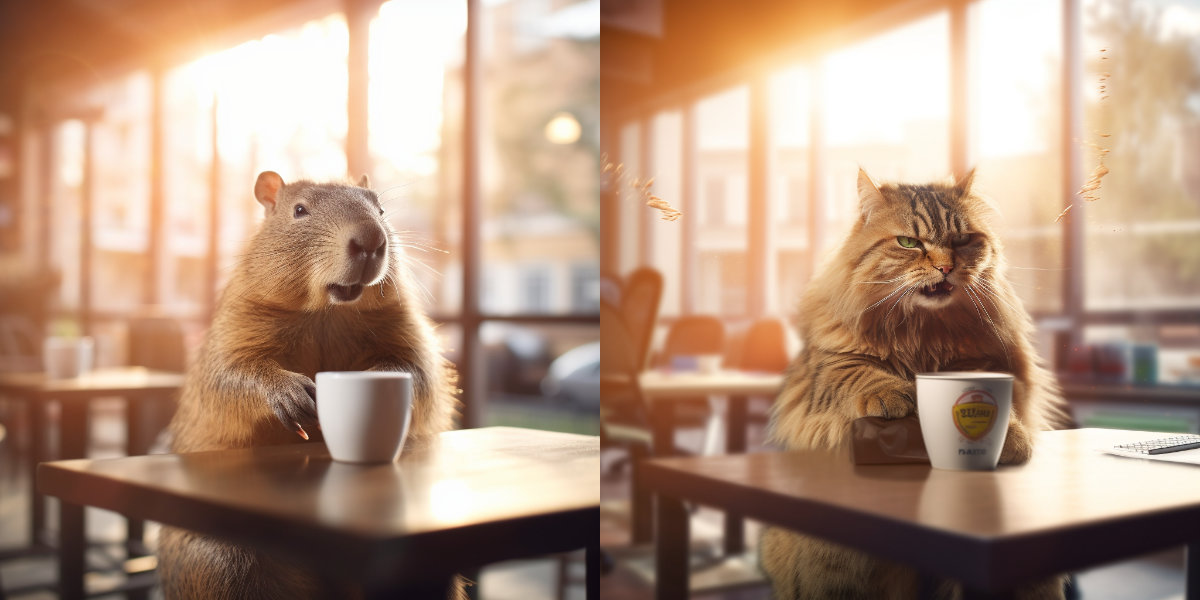
Applying Parameters To Your Prompts
These parameters can be very useful. Add them at the end after your prompt. You can combine multiple parameters. They all start by typing a double hyphen --
I'll put the prompt in the image captions.
Aspect Ratio
--ar (the aspect ratio you want)
Generate images with a specific aspect ratio.
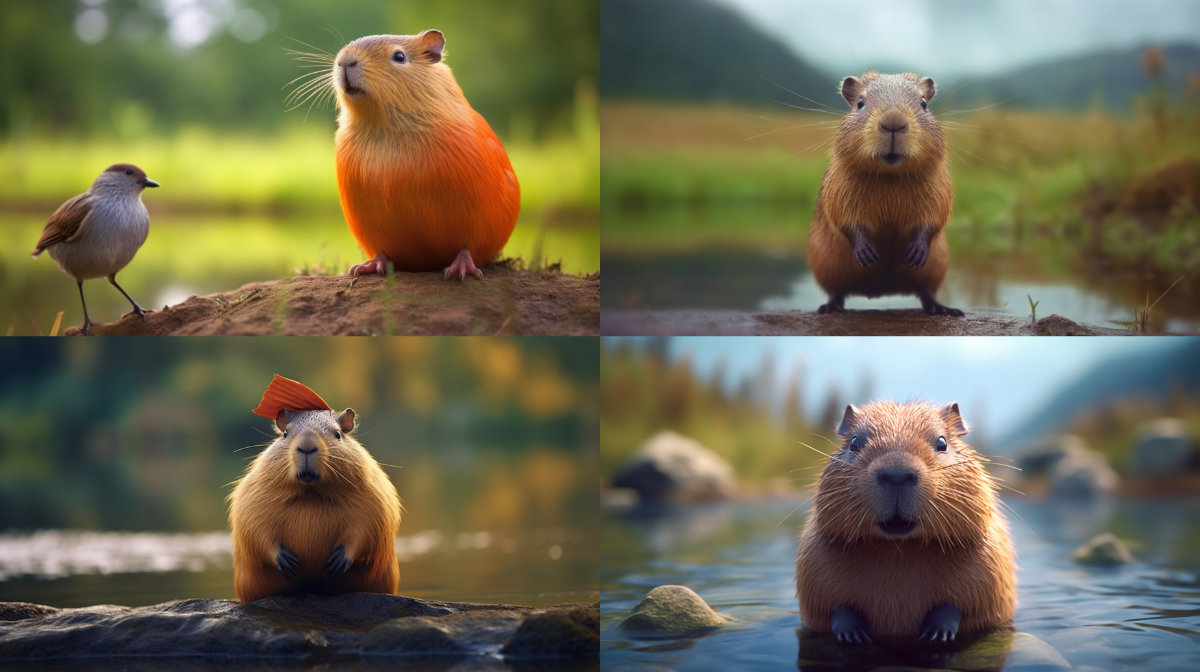
Chaos
--c (0-100)
Higher number will give you more varied results.


Image weight
--iw (0-2)
if your prompt uses images, then you can put this parameter to change how much influence the image portion of your prompt has in your final generated image. The default image weight is 1, and you can change it from 0-2 (2 being highly influenced by the image portion of the prompt.
We will look at some examples in the next chapter.
No
--no (things you want to exclude)
Midjourney doesn't understand negative prompts very well. If you want to exclude something, use the --no parameter.

Quality
--q (.25, .5 or 1)
The higher the number, the higher the quality will be the final generated image.

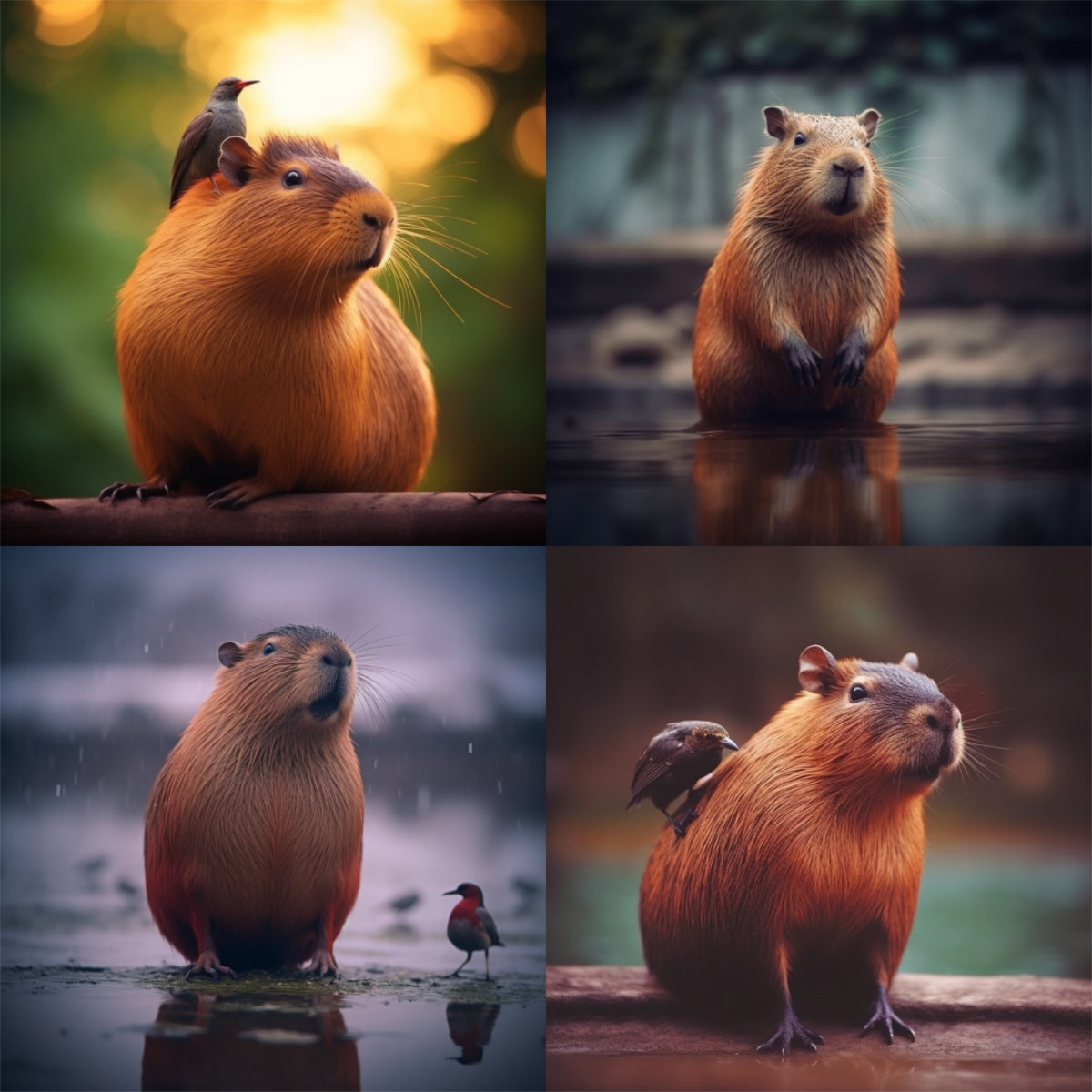
Repeat
--r (1-40)
The number of times you want to re-run the same prompt.
Seed
--seed (0–4294967295)
Midjourney uses these numbers as a ‘starting point’ of the generation. That’s why even if you put in the same prompt, you’ll get different results, because the seed number is random. So if you use the same seed with the same prompt, the image generated will be very similar every time.
This is usually not necessary, but it’s helpful if you want to generate consistent results. To find the seed number of a generated image (after you upscale the image), react to the message with an envelop emoji, and then Midjourney will let you know the seed number. Keep in mind that the seed number may change if you log out and in.
Stop
--stop (10-100)
This lets you stop the generation before it’s completed. The number represents the percentage of the generation.
Niji Styles
--style (cute, scenic, original, expressive)
You can fine tune the niji version 5 images by adding this to the end of the prompt. Here are examples of the 4 styles:

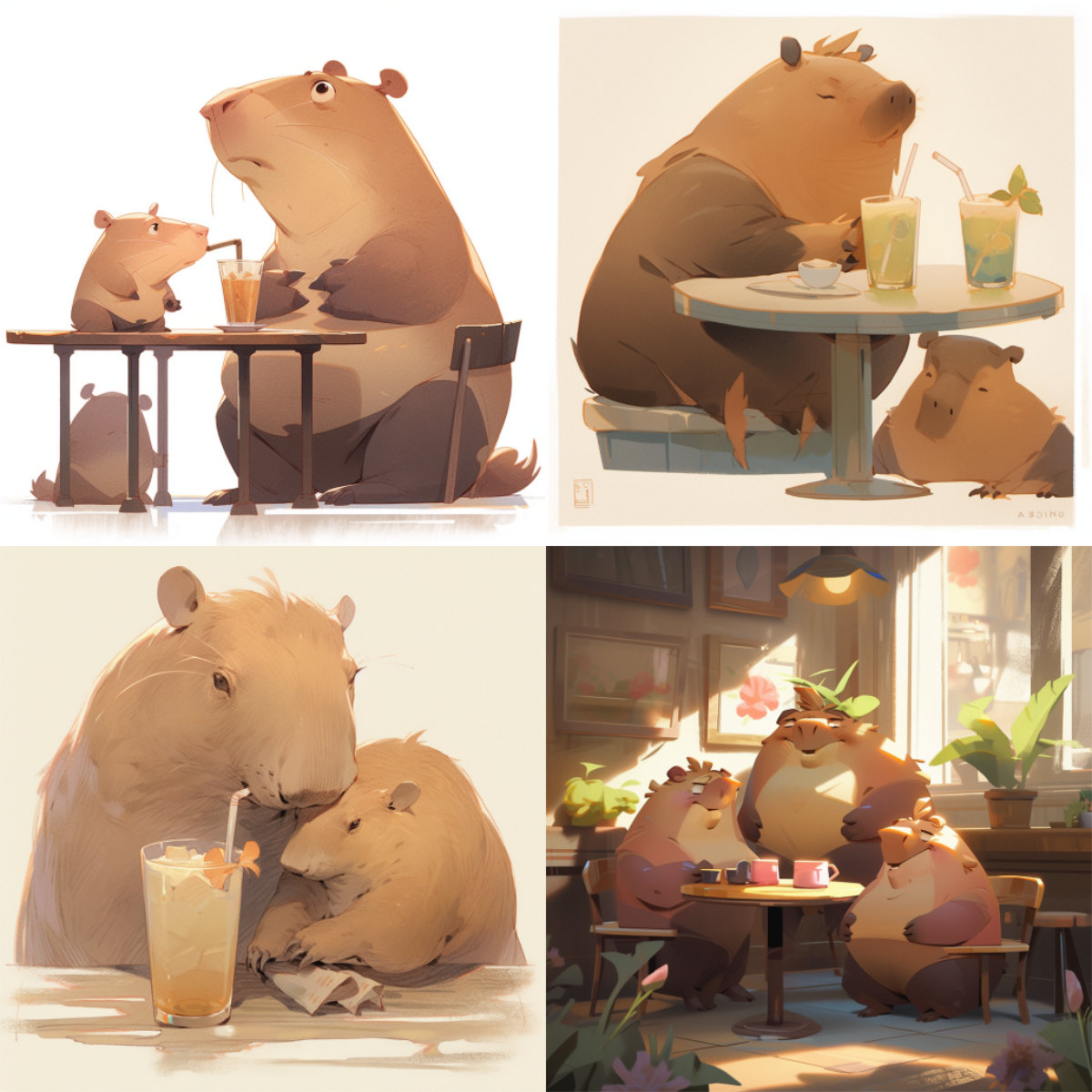
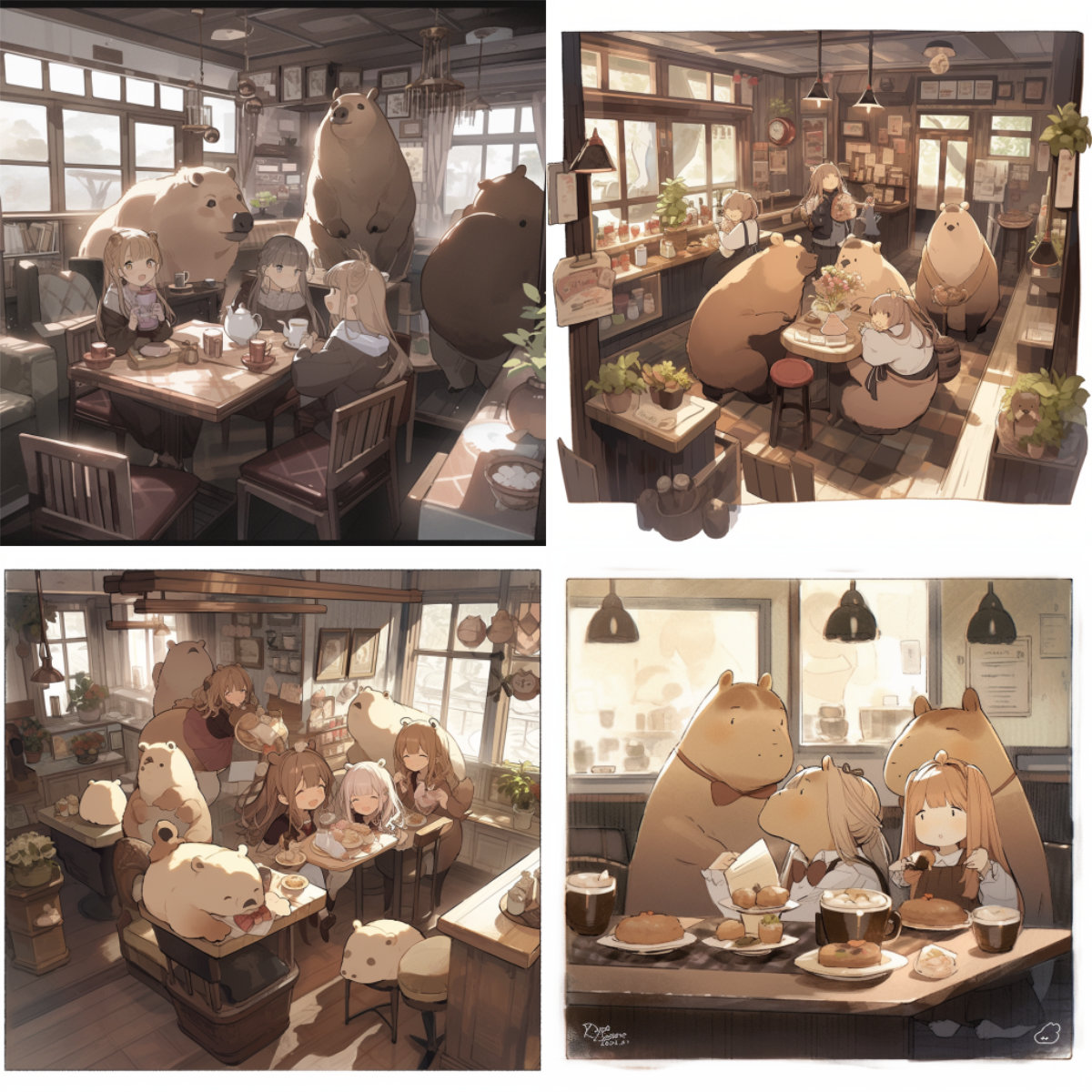
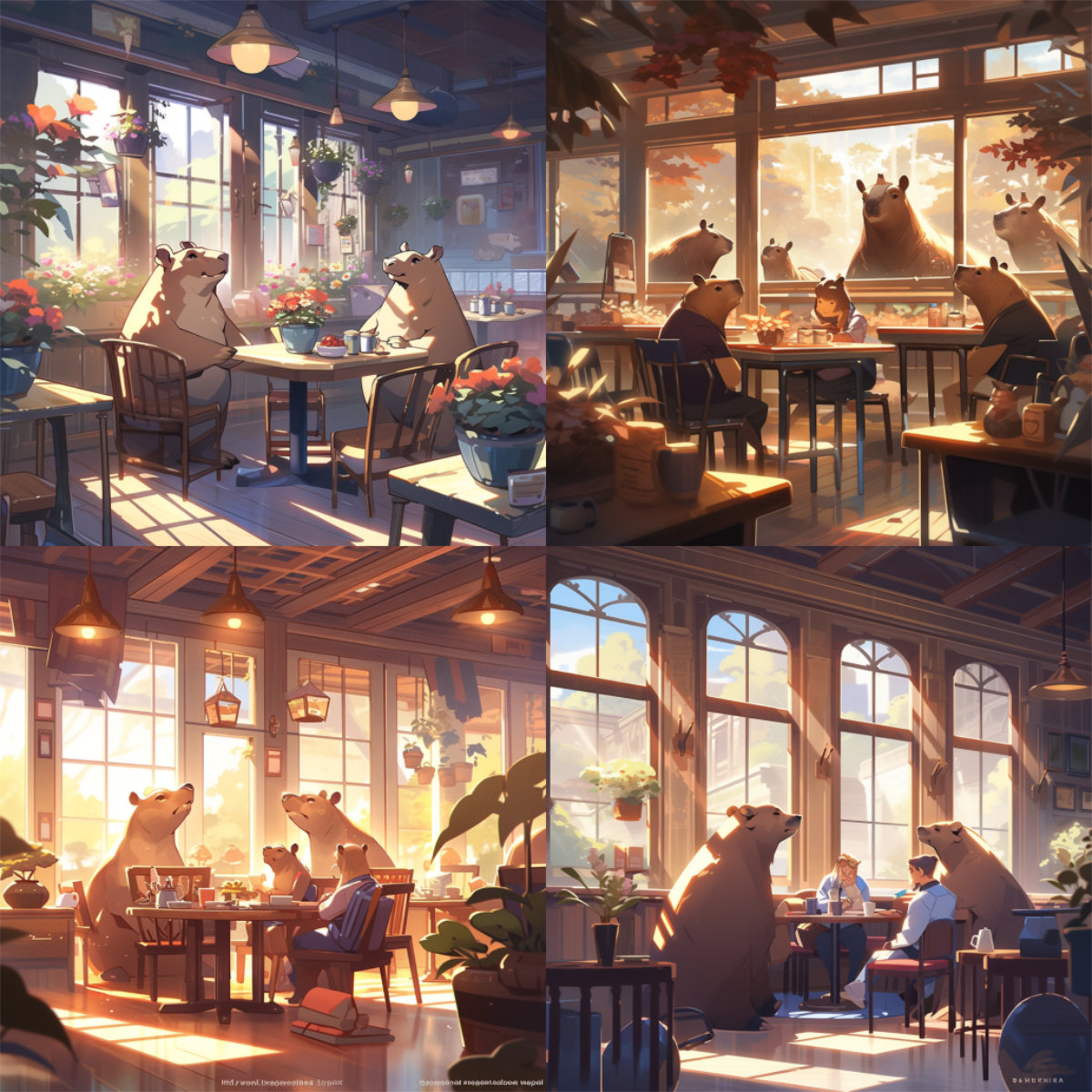
Tile
--tile
This lets you generate a tile of a repeating pattern so that you can create seamless patterns, which could be very useful for creating products. Note that this parameter doesn’t work for version 4. Use this website to check: https://www.pycheung.com/checker/ (You can also download a 4096 x 4096 pixel pattern using this website for free!)
